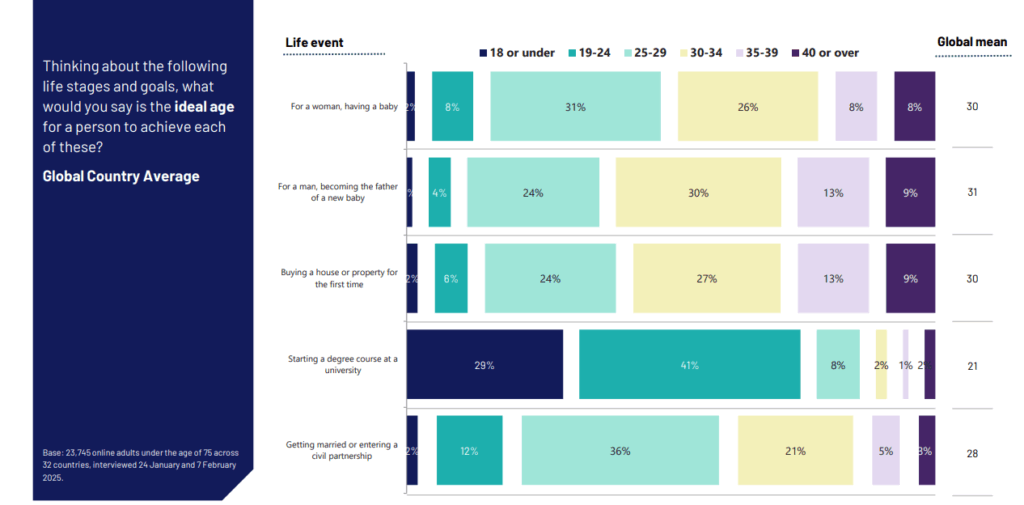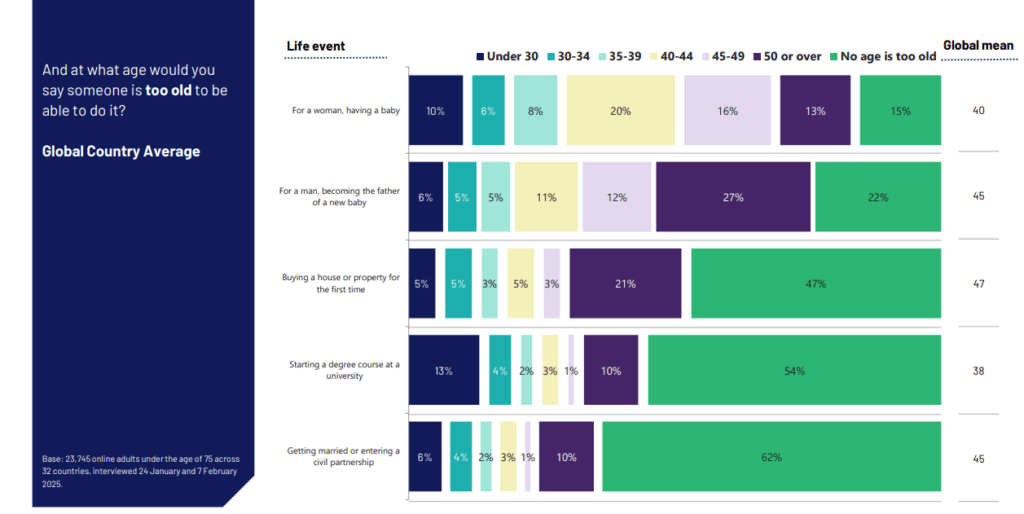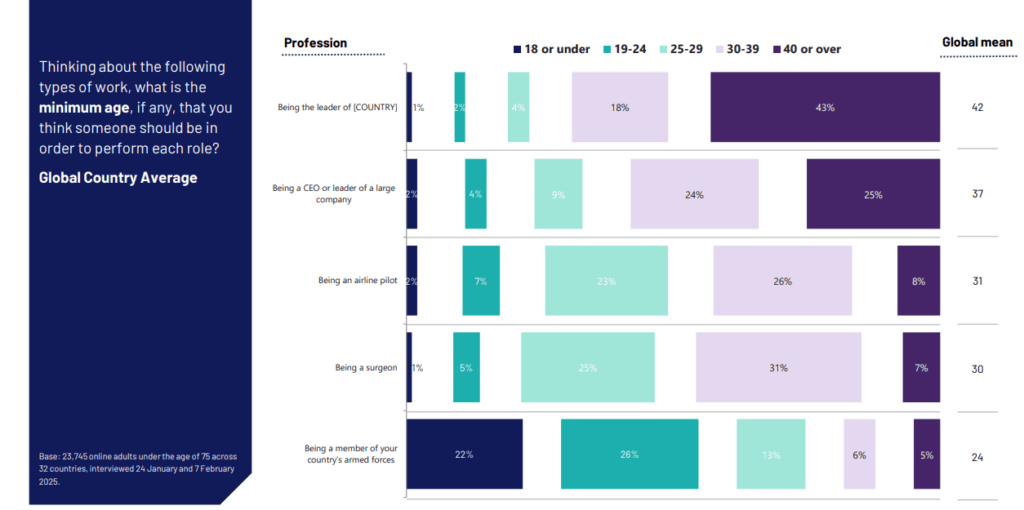Across the world, ageing is a common phenomenon, with the UN predicting that by 2030, 1 in 6 people will be aged 60 or over. But how are cultural attitudes adapting, and what does this mean for global sourcing strategies?
Based on Ipsos – Attitudes to Ageing 2025, a comprehensive 32-country study surveyed in early 2025 among 23,745 respondents under age 75, this article explores evolving attitudes to ageing and highlights key business sourcing insights for the growing silver economy.
🌍 Business-Relevant Key Insights from Global Attitudes to Ageing
On average, people across 32 countries say that “old age” begins at 66, while they expect to live to about 78 years on average.
Importantly, many countries overestimate the proportion of their population over age 65, reflecting outdated perceptions.
😊 Looking Forward to Old Age?
Globally, a majority (57%) of people do not look forward to old age, but positivity is higher among the young, educated, and affluent—key consumer segments. Location-specific observations include:
- Indonesia, Philippines, South Africa, and Thailand are the most positive.
- France, Chile, and Argentina show the least enthusiasm.
🎯 Life Milestones
The survey presents some interesting findings as to the “ideal age” for major life events:
- Ideal ages (global averages):
- 30: Woman having a baby
- 31: Man becoming a father
- 30: Buying a first home
- 21: Start university
- 28: Marriage

- “Too old” thresholds:
- ~40 for having a baby (women),
- ~45 for fatherhood,
- ~47 for buying a first house,
- ~38 for starting university,
- ~45 for marriage.
Yet, many believe “no age is too old” for marriage (62%) or higher education (54%).

👔 Professions and Age
Regarding professions/leadership roles and the age range for optimum capability, respondents mostly believe the optimal age to perform the role depends on the physical activity level, qualification and experience, and specific role requirements. For example, for the following roles,
- Minimum ages:
- 42 – national leader
- 37 – CEO
- 31 – pilot
- 30 – surgeon
- 24 – armed forces
- Maximum ages (when considered “too old”):
- 61 – national leader
- 52 – CEO
- 54 – pilot
- 57 – surgeon
- 50 – armed forces

In short, someone too young may not be able to meet the role requirements of prominent leadership responsibilities effectively.
Opportunities in the Silver Economy — Strategic Sourcing for Senior Markets
The growing ageing population represents a massive and expanding market opportunity for businesses engaged in sourcing and supply chains. Key sourcing opportunities include:
- Senior-focused products: Increasing demand for health, wellness, mobility aids, safety equipment, tailored nutrition, and leisure products designed for older adults.
- Technology solutions: Growing needs for user-friendly digital devices, smart home technologies, telehealth, and accessibility-enhancing innovations.
- Financial & service trends: Services such as senior travel, insurance, caregiving products, and age-friendly housing materials are rising rapidly.
- Customizing offerings for diverse silver consumers: Regional and cultural differences mean sourcing strategies must adapt to local preferences, affordability, and healthcare infrastructure.
- Sustainability and quality: Older consumers are increasingly valuing quality and sustainability, aligning well with green sourcing trends.
- Collaboration with suppliers: Businesses should actively engage suppliers to innovate product lines that meet the ergonomic, safety, and lifestyle needs of seniors.
Capitalizing on the silver economy through intentional sourcing strategies can yield competitive advantage, brand differentiation, and access to a rapidly growing consumer base.
Read More:
Integrating Attitudes into Sourcing Decisions
Understanding shifting attitudes to ageing can guide procurement teams to better anticipate product demand, innovate supply chains, and partner effectively:
- Tailor sourcing by considering positive perceptions among younger, affluent buyers who are early adopters.
- Plan inventory and marketing around key life milestones that reflect purchasing triggers for ageing consumers.
- Monitor demographic shifts and regional variations to optimize sourcing portfolios geographically.
Positioning Sourcing for a Silver Economy Future
Despite slow changes in societal attitudes towards ageing, the demographic reality is undeniable. Supply chains and procurement functions that recognize and adapt to these trends will unlock substantial business value.
Explore senior-friendly product categories and sustainable sourcing solutions to meet the needs of the world’s growing older population today:








